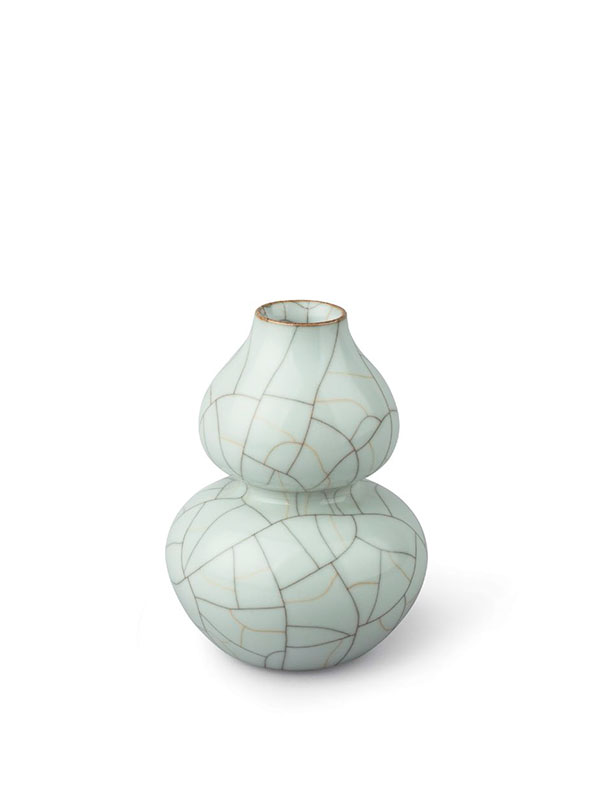Ge-type gourd-shaped porcelain vase
A porcelain vase of double gourd form, supported on a short foot. The vase is fully covered in a thick greyish blue glaze suffused with a network of black and faint russet crackle. Around the rim, where the glaze is thin, a russet colour is applied. The glaze stops neatly above the foot, revealing the dark, brownish body. The glazed base has three nail-like spur marks around the edge.
During the Song dynasty (960 – 1279), Ge wares were considered one of the ‘five famous kilns’ together with Ding, Jun, Ru and Guan, as identified by early Ming scholars.1 Ge wares are typically recognised by two main features, ‘purple rim and iron foot’ referring to the colours and ‘golden thread and iron line’ describing the two different types of the crackle.2 The taste for Ge ware continued into the Qing dynasty, when old pieces were collected and new ones created. Stained crackle-glazed wares of Ge-type were made at Jingdezhen from the Chenghua period (1465 – 1487) onwards. Gourd-shaped vessels or the gourd motif generally represent the power of healing or protection and are associated with longevity.3 Some gourd-shaped porcelain vases of comparable shapes and sizes are in the collection of the National Palace Museum, Taipei: two covered in Guan-type glaze, dated to the Southern Song to Yuan dynasty; 4 one in Ge-type glaze, dated to the Ming to Qing dynasty.5
- Wood, N. Chinese Glazes- Their Origins, Chemistry and Recreation, A&C Black, London, 1999, p. 87
- Li, Chu-Tsing and Watt, J. ed. The Chinese Scholar’s Studio- Artistic Life in the Late Ming Period, Thames and Hudson, New York, 1987, p. 164
- Welch, P. B. Chinese Art- A Guide to Motifs and Visual Imagery, Tuttle Publishing, 2012, p. 50
- The National Palace Museum, Taipei online collection archive, nos. 故瓷 17904 & 中瓷 4737
- Ibid. no. 中瓷 2905

